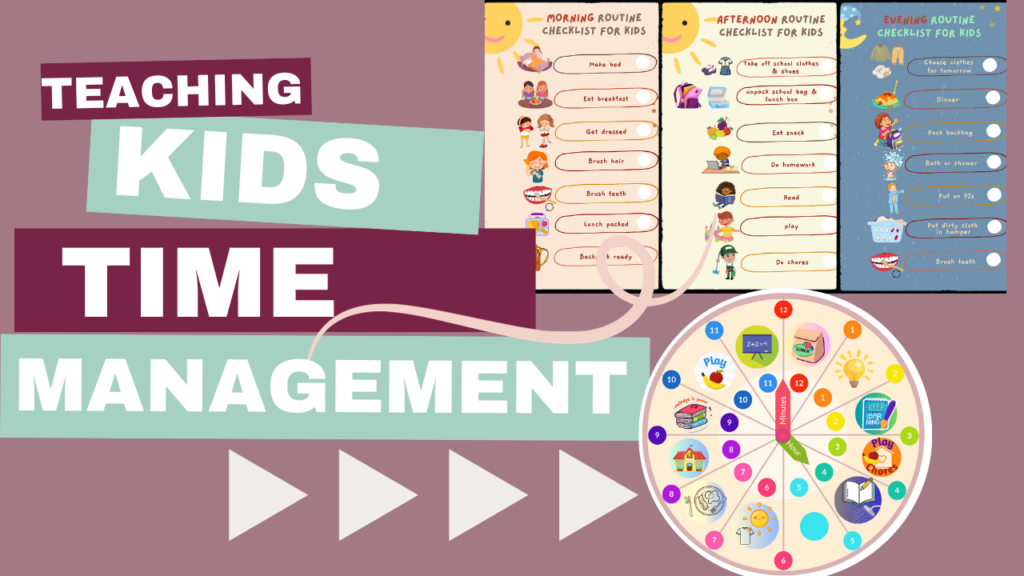Time management is a valuable life skill that can benefit individuals of all ages. As parents, guardians, or educators, instilling these skills in children from an early age can set them up for success in the future. One effective way to teach time management to kids is by incorporating the concepts of telling time and establishing a daily routine. In this article, we’ll explore creative methods such as routine checklists and routine clocks that make learning time management a fun and engaging experience for children.
The Magic of Telling Time
Learning to tell time is a fundamental skill and a fascinating adventure for young minds. Introducing children to analog and digital clocks can be an exciting way to kickstart their journey into understanding time. Begin with simple exercises like identifying the hour and minute hands on an analog clock or reading the digits on a digital one. You can even turn it into a game by asking them to match certain times with corresponding activities, like “What time is it when you usually have lunch?”
Creating a Sense of Routine
Children thrive on routines. Establishing a consistent daily routine helps them feel secure, organized, and prepared for each day. Involve them in creating their daily schedule and discussing activities they need to accomplish. From waking up and getting dressed to studying, playing, and bedtime, laying out the day’s plan empowers them to take ownership of their time.
Routine Checklists: Turning Tasks into Achievements
Routine checklists are potent tools that visually break down a day’s tasks into manageable steps. This method promotes time management and fosters a sense of accomplishment as tasks are completed. Create a colorful and easily accessible checklist that your child can interact with. Include tasks like brushing teeth, tidying up, homework, and hobbies. Encourage them to check off items as they complete them, providing a sense of satisfaction and progress.
The Charm of Routine Clocks
Routine clocks take time management a step further by merging time-telling with routine planning. These clocks feature a visual representation of a child’s daily routine alongside the traditional clock face. Each section of the clock corresponds to a specific activity, helping children understand the flow of their day. For instance, the “8:00 AM” section might show a picture of breakfast, followed by “9:00 AM” with a picture of school time. Routine clocks add a dynamic, interactive element to learning time management.
Linking Learning with Play
Learning time management doesn’t have to be a chore; it can be a delightful journey. Incorporate games, challenges, and rewards into the process. For instance, set a timer during playtime or encourage them to estimate how long different activities take. Celebrate their progress and time management milestones with small rewards or special activities.
Further Reading and Resources
For more ideas and activities related to teaching time management to children, check out the following articles:
- Simple Ways to Teach Kids About Time Management
- The Power of family routines
- Why is it important to set routines
Empowering with Tools: Routine Checklists and Clocks
To make time management an enjoyable experience, consider using our printable routine checklists and routine clocks. These tools enhance children’s understanding of time and turn daily routines into engaging adventures.
Conclusion
Teaching children time management skills through the integration of telling time and establishing routines is a valuable investment in their future. By incorporating fun activities like routine checklists and routine clocks, you can empower them to manage their time effectively while enjoying the process. Remember, learning time management doesn’t have to be rigid; it can be a playful and rewarding journey that sets them up for success in the long run.

